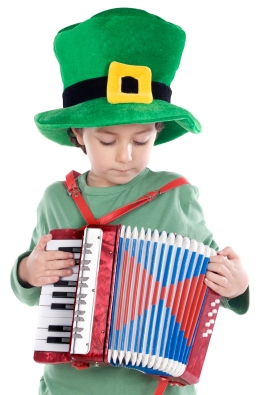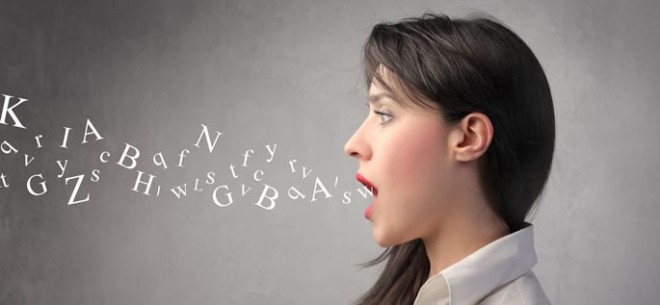
St. Patrick’s Day is this Saturday, March 17th. This day was dedicated to Saint Patrick, the foremost patron saint of Ireland. The day commemorates Saint Patrick and the arrival of Christianity in Ireland, and celebrates the heritage and culture of the Irish in general. Celebrations generally involve public parades and festivals, cèilidhs, and the wearing of green attire or shamrocks. Checkout these fun and festive St. Patrick’s Day activities that target speech! Brought to you by Speech and Language Kids.
St. Patrick’s Day Activities:
A Green Party-Teach Your Child the Color Green
Many children with language delays have trouble with learning their colors. Why? Because color words are language-based concepts. If your child has trouble learning language, he probably has trouble with his colors as well. One of my favorite ways to teach colors is to focus on one color at a time. Often when children are presented with many new concepts at a time, they have a harder time learning them. This is especially true of children who have language difficulties. I like to think of it in terms of things I’ve tried to learn as an adult. For example, let’s say two new people get hired at your job and start at the same time. If I’m trying to learn their names at the same time, I often get their names mixed up and call one by the wrong name, even though they look nothing alike. It’s not that I can’t tell them apart, it’s because I learned both names at the same time so they seem to be stored in the same part of my brain. When I try to retrieve them, it’s kind of a gamble as to which one I’ll come up with, at least until I know them better and have more practice. Maybe you’re super awesome at names and this doesn’t happen to you, but surely you can see how it might. This is what happens when we try to teach our children their colors all at the same time. Try focusing on one color per week or even per month. This will allow your child tons of practice with that one color and it won’t get as confused with the others. One great way to teach a single color is to have a party all about that color. Let’s pick green for now since it’s the official color of St. Patty’s Day. Tell your child that you’re going to have a green party that only uses the color green. Help your child pick out green clothes to wear and make some green pictures for decoration. You could even find a green tablecloth for the table. Ask your child to collect some green toys from her room to play with at the party. You could even have a green snack full of green foods! Try to put as much green into this party as possible. During the party, say the word green a lot. Remember, our language-delayed kids need things repeated many more times than other children before they start to learn a concept. You can get your child involved by asking her to point to something green (should be pretty easy since everything is green) or ask her what color the green things are in your party. Don’t ask her about other colors yet, just green. Throughout the rest of the week, point out things that are green wherever you go. See if she can find things that are green in books you are reading and in her environment. Take pictures of green things and put them together in a book. Do whatever it takes to completely bombard your child with green. Eventually, it should start to stick but it may take a while. You can keep doing this one color until she gets it and then move on to a different color. While you’re working on the second color, occasionally go back over green so she doesn’t forget it.
Make a Pot of Gold and Fill it With Sounds: Speech and Following Directions
Since St. Patrick’s Day always makes me think of leprechauns and their gold, let’s make a pot of gold and fill it with sounds! For this you will need something to serve as the pot. You could get a cheap kettle-looking pot from a party store (they should be pretty cheap the first week after St. Patrick’s Day) or you could just use a bowl, pot, or anything else you have laying around the house. You’ll also need some paper. You can use this activity to practice following directions by writing or drawing out the directions for creating the coins and rainbow. Then, have your child follow the directions to improve language skills. Here’s what you’ll want to do:
- Draw some circles on paper to represent coins.
- Have your child color the coins and write the letter on each coin that represents the sound your child needs to work on. If your child needs to work on a lot of sounds, you could make many different letters on different coins. If your child can’t write yet, you can write the letter for him but tell him what it is.
- Have your child cut the coins out or do it for him if he’s too young. Make as many or as few as you want.
- Draw a rainbow on paper and have your child color it in however he wants. You could also type in “rainbow coloring page” in Google Image Search and find some ready-made coloring pages to use.
- Place the pot at the end of the rainbow. You could tape the rainbow to the wall and have the pot at the bottom or just lay it all out on a table.
Now that you have the rainbow and pot made, it’s time to put in the coin. Each time your child puts a coin in, make sure he says the sound that is on the coin. If it’s a long sound (one you can hold out like /s/ and /f/), have him move the coin along the rainbow as he holds out the sound. If it’s a short sound, he could say it several times while he moves the coin along the rainbow and drops it in the pot. If you need help teaching your child how to say the sound, check out my article on teaching new sounds.
St. Patrick’s Day Scavenger Hunt: Vocabulary, Sequencing, Recalling Past Events, Past Tense Verbs
Get excited, this one’s going to be fun!! For this hunt you will need a collection of St. Patrick’s Day items. If you just so happen to have a bunch of Irish-themed toys like leprechauns, coins, rainbows, etc. then you’ll be all set! If not, which I’m assuming most people don’t have those things, you’ll need to do a quick Google Image search and print of some pictures of St. Patrick’s Day-Themed items. Now, sit your child down and show her all the pictures. Talk about what each one is and teach her the name of it if she doesn’t know. Next, have her close her eyes while you hide the pictures around the room (or in another room if she’s a peeker!). Have her go find one picture and bring it back to the table. Then, have her find another one and lay it next to the first. You will want these to be in the same order she found them. Finally, have her find one more picture and bring it back. Now you will have your child describe to you what happened in the hunt. Make sure she uses full sentences with the correct past tense verb to tell you what she found. Also, help her tell you the items she found in the correct sequence. For example, you might want her to tell you: “First, I found the clover. Next, I found the leprechaun. Last, I found the gold.” This will work on vocabulary (naming the right thing), sequencing (telling the order she found them in), and recalling past events using past tense verbs. Now, for some children this activity may be too hard or too easy. If it’s too hard, try backing it down so all your child has to do is name the things she found. You could say “What did you find?” and have her tell you what they are called. Or, you could just have her point to something she found. You could say “Where’s the gold?” and have her point. If the activity is too easy, you could make it harder by holding onto the pictures for your child and having her use her memory to recall what things she found. If it’s still too easy, have her find several things and then try to recall. As with all of my activities, it’s all about adapting it to be as hard or as easy as your child requires.









